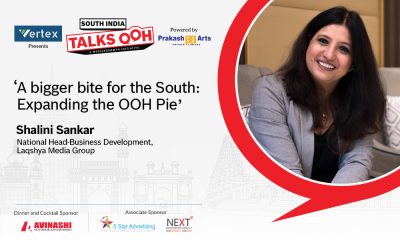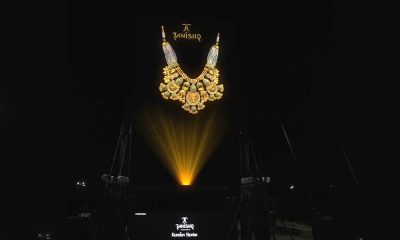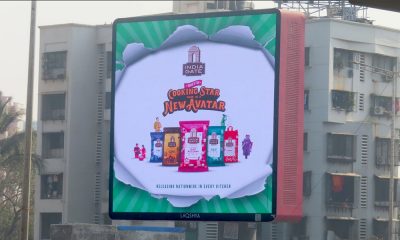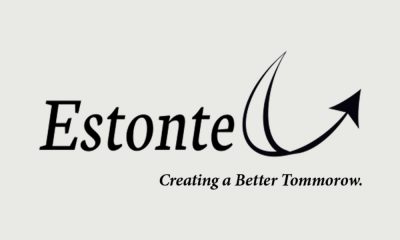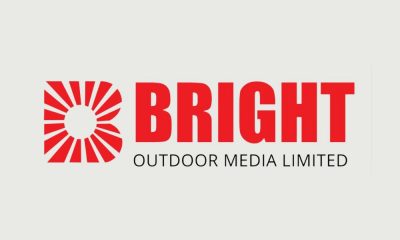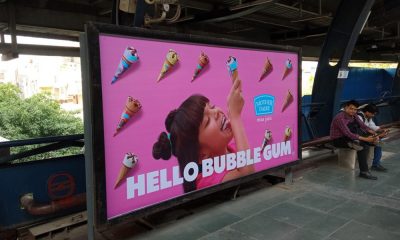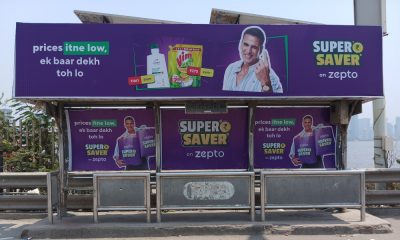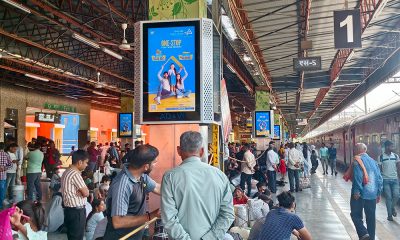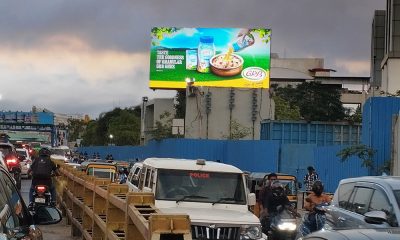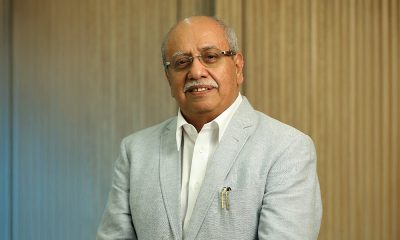Audience Data & Measurement
OOH Geared For Growth: Industry Leaders
Indian OOH leaders believe that adoption of best practices, quality improvements across the board, and some course corrections will go a long way toward driving the industry’s growth in the coming times
 When the telecom boom happened, Indian OOH was brimming with telecom brand advertising of all hues. It was feared then that should the telecom advertising in the OOH space reduce, the OOH business itself would severely hamstrung. So, when the telecom industry ran into a series of regulatory brickwall, several telecom brands reined in their advertising budgets, and with that their OOH spends also dried up. But, did the OOH industry grind to a halt? The answer is, fortunately, in the negative.
When the telecom boom happened, Indian OOH was brimming with telecom brand advertising of all hues. It was feared then that should the telecom advertising in the OOH space reduce, the OOH business itself would severely hamstrung. So, when the telecom industry ran into a series of regulatory brickwall, several telecom brands reined in their advertising budgets, and with that their OOH spends also dried up. But, did the OOH industry grind to a halt? The answer is, fortunately, in the negative.
Time to time, many new brands and categories enter the OOH fold, and create larger-than-life imageries. Indrajit Sen, Executive Director, Indian Outdoor Advertising Association (IOAA), explains, “Internationally some of the brands are exclusively spending on OOH and digital. When it comes to OOH, they prefer technology-led campaigns which provide them customer engagement and get predominate recall with sheer impact and other advantages. All brands do spend considerable amounts on their communications strategy to drive impact and to generate recall value and no other medium can do that as effectively as the OOH medium. There are ample advantages that OOH offers like localisation, lesser cost and attractive displays. Hence, more and more brands have started utilising the OOH medium.
Alok Jalan, MD, Laqshya Media Group, adds that “since consumers spend a lot of time outdoors and in transit, brand managers understand that in order to communicate with this young and mobile consumer group, OOH advertising has to be an integral part of their media plans.
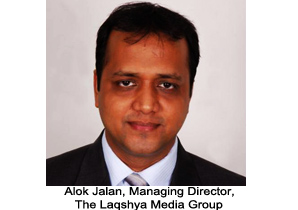 Moreover, OOH advertising creates a multiplier effect that also generates a top-of-the-mind brand recall. We are also seeing an influx of new age advertisers like ecommerce, who are using this medium in a very effective manner.
Moreover, OOH advertising creates a multiplier effect that also generates a top-of-the-mind brand recall. We are also seeing an influx of new age advertisers like ecommerce, who are using this medium in a very effective manner.
According to Mukesh Gupta, MD, Graphisads, there has been an approximately 30 per cent hike in profitability of OOH industry over the last few years with new entering this medium.
Raminder Singh, MD, Glo (OOH wing of Lodestar UM), says there is a clear increase in the number of categories advertising in the outdoor. “There are categories like real estate and online e-commerce sites which have started using OOH as their prime advertising platform. Brands like Snapdeal and Quikr have cut down budgets for their mediums to spend more on OOH, he says.
Non-Metro Markets: The New Buzz
As brands train focus on the growing Tier I and II cities, most of them are seeing the OOH medium as the right platform to establish deep consumer connects on those markets. Kaushik Chakravorty, Co-Founder & Director, Street Talk predicts that metro cities and small towns will eventually share the same percentage of budgets. “Traditional split of total spends on OOH has been 70 per cent in the metros and large towns and 30 per cent in medium and small towns. All that is changing. In the next 2-3 years we will have equal share for both sets of markets. This again is out of compulsion because of the growth opportunities in medium and small towns, eventually resulting in better brand connect with consumers in these markets, he articulates.
 Sen asserts that the OOH medium is the best suited medium for reach in the rural places. “When it comes to Tier I & II or even small towns, there is no medium that can work better than OOH medium because if we look at other mediums such as TV, the penetration of satellite is very less. A person needs to spend money to buy a TV set, for its connection, power and monthly subscription. And print also is not a favourable medium as the literacy level is pretty low in the interiors. OOH is the only medium which is the most accessible by the audiences and best part it comes free to them. A person likes it or not, he will have to see it. Here the matter is not about choice but it is about no alternative.
Sen asserts that the OOH medium is the best suited medium for reach in the rural places. “When it comes to Tier I & II or even small towns, there is no medium that can work better than OOH medium because if we look at other mediums such as TV, the penetration of satellite is very less. A person needs to spend money to buy a TV set, for its connection, power and monthly subscription. And print also is not a favourable medium as the literacy level is pretty low in the interiors. OOH is the only medium which is the most accessible by the audiences and best part it comes free to them. A person likes it or not, he will have to see it. Here the matter is not about choice but it is about no alternative.
Singh feels that better utilisation of OOH would bring about more improvement in the unorganised markets. “This is a good sign for the industry as more spends would improve market conditions and professionalism in the interior OOH industry. Even big OOH companies like Jagran Engage and JCDecaux Advertising have started concentrating on these places, he says.
Conversely, Noomi Mehta, Chairman and Managing Director, Selvel One Group, says the progress in the small OOH markets is rather slow. “The medium is less patronized and thus it is not happening so far. May be, if we take the example of Tier I cities of east zone like Patna and Ranchi, it is growing in the outdoor a little bit but with the help of local brands. The rest of the cities are not showing that growth. The biggest problem lies with the authorities as they themselves are not well informed about the capabilities of OOH as a media. Though pan-India the situation is not worse everywhere, a city like Jaipur is doing extremely well, but at the same time Ahmadabad is not growing at a steady pace, Pune has excess supply, which is another problem for the industry. There are no statutory models to be followed by the media owners and corruption related to illegal sites is ruining the business everywhere.
Aesthetics Matters
 Today maximum eyeballs and high traffic alone are not the only requirements of brand marketers. Aesthetically designed and properly placed sites are essential, especially for multi-national brands as they don’t like to compromise on any front while communicating to their TG.
Today maximum eyeballs and high traffic alone are not the only requirements of brand marketers. Aesthetically designed and properly placed sites are essential, especially for multi-national brands as they don’t like to compromise on any front while communicating to their TG.
On this count, Jalan says, “At the moment, there is too much clutter in our urban areas and it is essential to break the clutter to enhance the quality of OOH messaging.
For brand managers, innovations are not only associated with cut-outs and neons but they are keen on adopting innovative media formats. Elaborating more on this, Chakravorty explains, “Let us go beyond traditional OOH media is something that you hear from every second brand manager. In this situation creating new, iconic media will come as a relief for specialised agencies in general and brand custodians in particular. It will be an opportunity for category leaders among the advertisers to leverage these structures to create iconic stature for their brands.
And that can be done by the media owners, says Sen. “It depends on media owners on how well they maintain it and sell it. But, as far as brands are concerned, they are very clear with their preference of media depending on their USPs. For instance, a clean packaging food brand wouldn’t like to utilise bus back panel as it gets dirty but at the same time a reputed automobile and investment brand won’t mind taking it because he is not bothered about cleanliness but is actually concerned about the car passenger driving behind the bus, says he.
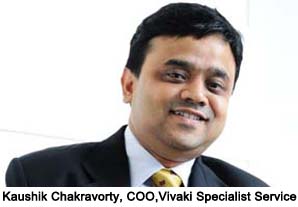 But here the concern is how can industry create such sites? Mehta answers, “The main problem actually lies with a plethora of people who entered this industry without any knowledge and discipline. When it comes to showcasing a big infrastructural project we need to plough in big names. Private entrepreneurial help is required to create iconic properties but unfortunately the advertisers today are spoilt with choice, so for the governments it becomes difficult to involve big brands or corporate in such infrastructural development and city beautification initiatives.
But here the concern is how can industry create such sites? Mehta answers, “The main problem actually lies with a plethora of people who entered this industry without any knowledge and discipline. When it comes to showcasing a big infrastructural project we need to plough in big names. Private entrepreneurial help is required to create iconic properties but unfortunately the advertisers today are spoilt with choice, so for the governments it becomes difficult to involve big brands or corporate in such infrastructural development and city beautification initiatives.
Level Playing Field
The medium has grown by leaps and bounds in recent years but it still needs to climb higher and come up at par with other advertising formats. Concessioners say that many grey areas need to be sorted. “Creativity, accountability, honesty and transparency as founding and non-negotiable principles create trust. To compete, the OOH industry needs to create trust n the mind of the advertisers. This can be achieved through better processes, creative interventions and consistent delivery of service level deliveries. In turn, clients need to move the conversations solely from a’price point’ discussion to a’campaign value’ analysis. More importantly, I believe there is a ‘dearth of dignity’ for the others among the stakeholders. This needs to change to a more inclusive respect by all concerned, opines Chakravorty.
Sen lists some more issues that require the urgent attention of all. “We need to curb the oversupply of displays. In a commercial index, demand and supply affects the revenue part. Due to this, the industry’s overall revenue is going down. Media owners tend to put up a site at not so suitable place due to which the overall business and industry suffers. Secondly, the regulatory environment has to be sorted out. Short term tenders don’t allow media owners to invest sufficient amount of money in building up good sites and to recover their investments. To have aesthetically sound sites, we require long-term tenders where people can invest correct amount of money. It will also attract higher rates from brands.
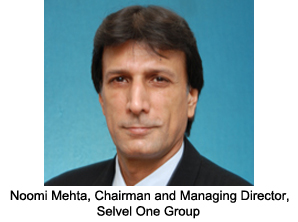 According to Singh, for OOH to be at par with other mediums, the industry will have to start working like them. Like Radio, TV and print media that have their own common metrics, OOH also requires a common currency through which the efficiency of the medium can be shared with brand owners. Apart from this he feels that there is the necessity of adopting scientific design media planning for the better execution of the medium.
According to Singh, for OOH to be at par with other mediums, the industry will have to start working like them. Like Radio, TV and print media that have their own common metrics, OOH also requires a common currency through which the efficiency of the medium can be shared with brand owners. Apart from this he feels that there is the necessity of adopting scientific design media planning for the better execution of the medium.
Jalan adds that to encourage more marketers to invest in OOH advertising, the industry needs to work on defining clear metrics to evaluate the effectiveness of outdoor advertising campaigns. “Also, in India, we require to create greater uniformity in rules and regulations for the outdoor medium across various regions. IOAA has already brought together different key outdoor media organisations to address these particular needs, he avers.
Organised Industry = Lucrative Industry
Lack of transparency has hindered the industry’s progress “These days brands are highly concerned about legal or illegal media and are conscious about the regulatory norms. Even municipal bodies are quick to send notices directly to brands if they are seen to use illegal media. Once this happens with any brand, they won’t come back to this medium, says Gupta.
According to Chakravorty, “Transparency will have to flow from the top to bottom. Standard regulations for all and sundry will not only help in creating a better OOH inventory but also help in making the landscape look better aesthetically. An organised OOH industry will definitely bring more investments by advertisers, he says.
Mehta asserts that major steps are needed to overhaul the industry’s practices. “There should be two set of norms – internal and external. By internal I mean that there must be a single association that implements the strong rules in an unbiased manner to regulate the OOH field. A strong enforcement is required to make the media owners understand the fair trade policy of outdoor. It is time that the media owners got disciplined and took some decisions particularly on issues like outstandings. Externally, first and foremost we need to represent ourselves as an industry and we need that recognition from the authorities. The brands want transparency and are asking for genuine rates; the media owners should give proper rate cards and list the sites.
The challenges notwithstanding, the current trends suggest that Indian OOH industry is primed for the next growth wave.
